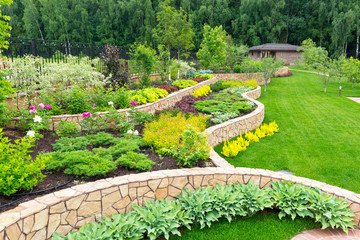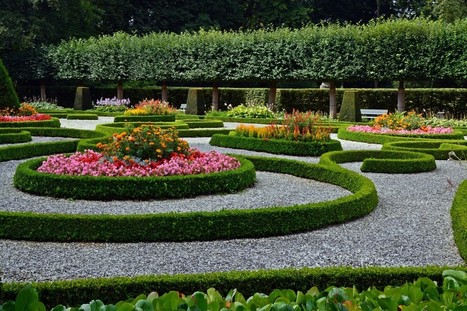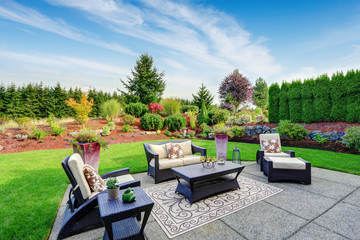
Landscaping Techniques
Landscaping Harrisburg PA techniques are the methods and materials used to create attractive, functional outdoor spaces around a home. They can include the addition of plants, changes to the terrain, and the construction of structures like fences, patio covers, or decks.
Begin with a clear vision for the landscape. Take time to observe your property at different times of day and in various weather conditions.
Landscaping involves enhancing the beauty of a yard while also adding functional elements. A well-planned garden may have a lawn for kids to play on, shrubs for privacy and color, perennial flowers to brighten the spring and fall, and deciduous trees that provide winter structure and visual interest. In addition to the plants themselves, a landscape may incorporate paths, fences, decks, arbors, and gazebos to create a cohesive design that enhances your home’s value and appeal.
Among the most important landscaping techniques, the principle of “right plant, right place” emphasizes matching a landscape to its site. Factors such as soil composition, climate, water availability, and the presence of other plants must be considered to ensure that the landscape will thrive.
In areas with arid conditions, xeriscaping may be necessary to minimize water use. In these cases, the plantings are often made of low-water-use, native plants that are adapted to the region’s climate and soil conditions. Mulching with rocks is also common in xeriscaping, as it helps the ground retain moisture and discourages weed growth.
Even in an area with abundant rainfall, plants that are tolerant of dry conditions can add beauty to a landscape. Various shades of green and the varying textures of leaves, fruit, stems, and bark add depth to the landscape. In addition, flower colors in the spring, berries in the autumn, and evergreen foliage in the winter contribute to the landscape’s four-season beauty.
The form and shape of plants also add to the landscape’s aesthetics. The curving shapes of hedging and curved path edges draw the eye, while retaining walls, fences, and gazebos add a sense of enclosure to a garden or yard. A well-planned planting can take advantage of the way that the sun moves throughout the day, providing shade in summer and sunlit spots in winter.
Finally, the sound of a fountain or waterfall in a landscape adds tranquility and beauty. In the case of a garden, the sound may be further enhanced by placing stones in the water’s flow to create a soothing effect. The sounds of wildlife such as birds and insects also add a pleasant ambiance to the landscape.
Hardscaping
Hardscaping is a crucial element of landscape design that involves the use of non-living materials. It can be created using a variety of materials, such as stone, concrete, wood, and brick. In addition, it can be combined with softscape elements like flowers, bushes, and trees to create a more cohesive look.
Some examples of hardscaping include pathways, patios, walls, and water features. Pathways are usually made from materials like stones or wood and help connect different areas of the garden. They can also be used as focal points or boundaries between different zones in the landscape. Patios and paved walkways are great places to relax and entertain guests. They are often made from materials like slate, marble, granite, and flagstone, which give them a unique and elegant appearance. Water features such as fountains and ponds are an excellent way to add beauty and ambiance to your garden. They can be made from a variety of materials, including natural stone and preformed plastic liners that allow for a range of sizes and shapes.
Another important benefit of hardscaping is that it can reduce maintenance. Hardscapes do not require regular watering, mowing, or trimming, and they are also durable and resistant to weather changes. This makes them an ideal choice for people who want to reduce their workload while still enjoying the benefits of a beautiful outdoor space.
In addition, hardscapes can increase the value of your property. By adding a pool, fire pit, or deck to your yard, you can make it more attractive and functional for you and your guests. These amenities will also appeal to potential buyers when you are ready to sell your home.
However, there are some drawbacks to hardscaping. One is that it can be expensive, especially if you choose to use high-quality materials. It is also important to consider the environmental impact of your hardscaping. Every hardscape element that you install will affect the small ecosystem that surrounds it. This means that it could potentially harm the environment by removing grass and other plants or introducing unwanted animals.
Lighting
A good lighting plan not only creates a safer and more welcoming space at night but also enhances the beauty of your landscape. However, lighting your landscape can be a bit tricky to get right. The wrong techniques can create dark pockets and blinding bright spots that can throw off the overall effect. There are several different types of landscape lighting techniques that can be used to highlight the features in your yard at night and make them come alive.
Pathway lighting is one of the most common and simple ways to add a little extra beauty to your outdoor space at night. This technique uses a series of lights along your pathways that are staggered so they illuminate the way for walkers without glaring directly into their faces. The spacing of these lights is important because you want to avoid a uniform pattern that makes the area feel like an airport landing strip. Instead, you want an alternating pattern that follows curves and obstacles in the pathway.
Up-lighting is another landscaping lighting technique that can create dramatic effects. This is achieved by placing landscape lights underneath plants or structures and pointing them upward. This can be done with plants, trees, statues, or any other feature in your backyard. This type of lighting highlights texture and creates beautiful shadows on surfaces and walls.
Washing is a type of lighting that can also create interesting silhouettes. This is done by placing a light at the base of a feature, such as a wall or trellis, and directing it towards the feature itself. This can be a great way to draw attention to an architectural design, water fountain, or other structure in your yard at night.
Cross-lighting is a unique and dramatic technique that highlights the silhouette of a tree or sculpture by lighting it from two sides. This can be done by using both spotlights and recessed fixtures.
There are many different types of landscape lighting fixtures, but postmounts are one of the most commonly used for walkways and other areas around a home. These are small posts that install into the ground and can be lined up along a walkway or arranged to frame a pond or other feature in your yard.
Water
Water is a key factor in any landscaping design. With droughts and limited water supplies in many areas, landscapers must focus on conservation as well as style. There are several ways to do this, including using native plants or ones adapted to the area, reducing lawn size, incorporating mulches, creating hydrozones (grouping plants with similar water needs), and using efficient irrigation systems.
The use of focal points in a garden is important to create a balanced and harmonious landscape. These can include trees, shrubs, benches, fountains, and other water features. In addition to their visual appeal, these also add sound and other sensory input.
A landscape plan is necessary to help guide the process of landscaping a property. This will show where structures are located, any existing trees and shrubs, property lines, driveways and sidewalks, and any other elements that may be a constraint. Having this information at hand will help the landscaper make the best choices of plants and hardscaping materials for the space. It will also give a good idea of how much water will be needed and where it will be used.



